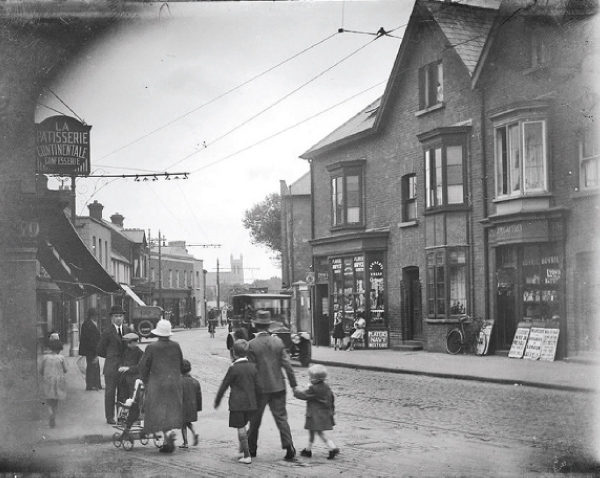
Image courtesy of flickr.
Geneva Pattison
The extension of the government-sanctioned travelling distance from two kilometres to five kilometres was a small, but very welcome, improvement to our everyday lives.
It’s wonderful to just be outside, although we often find ourselves walking the same routes and seeing the same scenery and it can get repetitive. Something curious that we pass every day, that can be overlooked on occasion, are our local street names.
If you search for it, there’s a wealth of history and stories surrounding our local place names. One begins to wonder how did these unusual names come to pass, or has anything been lost in translation? Even though libraries are currently shut, there are many ways online to find this information for yourself.
Logainm.ie is a great website to begin your search. This website is a comprehensive database which has compiled all of Ireland’s place names in Irish and English. The Logainm project was developed by Fiontar and Scoil na Gaeilge in conjunction with the Place Names Branch of the Department of Culture Heritage and the Gaeltacht, and is continuously updating its list of place names.
If you would like to find out the name of a local street in Irish, you can search for it by entering the English name into the website’s search bar. When you see both translations of any given street name side by side, certain aspects of their history become apparent. You can tell almost immediately whether a place has Viking, Norman or English heritage, but where does Dublin 4 fit in?
Many streets in Dublin 4 were named during the 18th or 19th centuries, so naturally they have names inspired by places in England, or English surnames.
Places like Raglan Road (Bóthar Raglan), on the surface, traditionally have major Irish connotations, through the work of the famous poet Patrick Kavanagh and later, The Dubliners. However, Raglan Road’s naming came to pass in 1857, upon the end of the Crimean War. The road was named after Lord Raglan, FitzRoy James Henry Somerset, who was the commander of the British troops sent to the Crimea during wartime and the road was named to commemorate his service.
Looking through a PDF available from dublincity.ie, dedicated to the history of the Poolbeg area, there’s some interesting historically early information available. The names of places like Poolbeg (derived from the words ‘little pool’), date back all the way to medieval Ireland, with the earliest record of the placename dating from around 1488.
Even before this era, Poolbeg was understood to be part of the lands of Thorncastle from as early as 1306, however 1488 was the first time it was officially documented. The name Thorncastle dates back to the 1200s, when the Fitzwilliams granted land to their ally, Walter de Ridelford the Lord of Bray. On this land, he built a fortress surrounded by a whitethorn hedge (hence, ‘thorn’ ‘castle’) within his South Dublin township.
Even though this fortress was in Blackrock, Ridelford had a residence in Donnybrook and this is likely where Thorncastle Street gets its name from.
Ireland has had many invasions throughout the centuries, from the Vikings to the Normans and the Tudors. The streets are steeped in stories of battles won and lost, of old trades long past and historical figures remembered.
There are many other avenues of investigation and discovery with regards to Irish place names and ancient street names. The next time you’re out on your walk, see if you can reveal some of that history for yourself.
Link to the Logainm website below.
https://www.logainm.ie/en/res/171
Link to the PDF on the History of Poolbeg below.
http://www.dublincity.ie/sites/default/files/content/WaterWasteEnvironment/WasteWater/RingsendWastewater%20TreatmentWorksExtension/RingsendWastewaterTreatmentWorksExtension/Documents/HistoryoftheArea.pdf
Link to the PDF on the Placenames of South Dublin.
http://source.southdublinlibraries.ie/bitstream/10599/4930/2/South%20Dublin%20Placenames.pdf
Link to the Jstor article from the Old Dublin Society on the history of Thorncastle street.
https://www.jstor.org/stable/24616022?read-now=1&seq=1#page_scan_tab_contents
Link to information about the Fitzwilliams and Dublin 4.
http://www.mountmerrionhistorical.com/MM300/1700_1900.html



